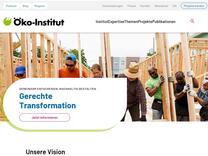Germany has approximately 11,000 municipalities which can make a significant contribution towards achieving climate targets. The Local Authorities Funding Guideline (LAG) of the German National Climate Initiative (NCI) has supported municipalities in designing and implementing climate action since 2008. One of the LAG components comprises funding a dedicated position for a climate action manager in a municipality. Since 2008, more than 800 climate action managers have been funded in this way. Their tasks are very diverse. First, they implement investments in energy efficiency. Beyond that, they make a major contribution to establishing climate action in municipalities. Among other things, they organise and coordinate networks and expert groups within and outside their administration, they conduct public relations work, carry out educational projects, and solicit additional funding for various projects. However, evaluating their impact presents a challenge. This study contributes towards such an evaluation. To determine the impact of climate action management, a set of criteria and indicators have been identified and a survey consisting of 46 questions belonging to 6 question blocks on the topic of municipal climate action was created. In this paper the questions in the following four blocks are evaluated: (i) Introductory, statistical questions, (ii) Climate action personnel in the municipality, (iii) Importance of climate action in administration and local politics, and (iv) Inventory of climate action activities. The survey was conducted among all municipalities with more than 10,000 inhabitants in two German federal states: North Rhine-Westphalia and Brandenburg. The evaluation of the survey was carried out in three groups: 1) municipalities with climate action managers, 2) municipalities that once had a climate action manager, but no longer have one, and 3) municipalities that have never had a climate action manager. The comparison of the results of the three groups shows that municipalities with a climate action manager perform better in practically all of the criteria surveyed than municipalities without a climate action manager: climate action has a higher priority, generally finds stronger support in municipal politics and greater attention also outside the environmental protection sector. There is more often a climate action committee within the administration, there is more often a financial budget available, more experts are involved in implementing climate action and more funding programmes are tapped into. Since the majority of cities in Group 3 are smaller cities with 10,000 to 20,000 inhabitants, it can be seen that cities of this size are less active in climate protection. These cities obviously need more or different support through funding. The effectiveness of the LAG’s „climate action manager“ funding priority could be demonstrated. The funding of a position for the manager to implement climate action in the municipalities should therefore be continued. The funding programme should be further expanded to reach smaller municipalities in particular. It could also be shown that personnel responsible for climate protection in the municipality is essential in order to become more active in climate protection. The survey results can therefore be used to demonstrate the importance of climate action managers for municipal climate action and for the implementation of climate protection measures. The aim should be to increase the number of municipalities with climate action managers.
Evaluating the impact 11.10.2021 Publikationen Energie & Klimaschutz Bücher

